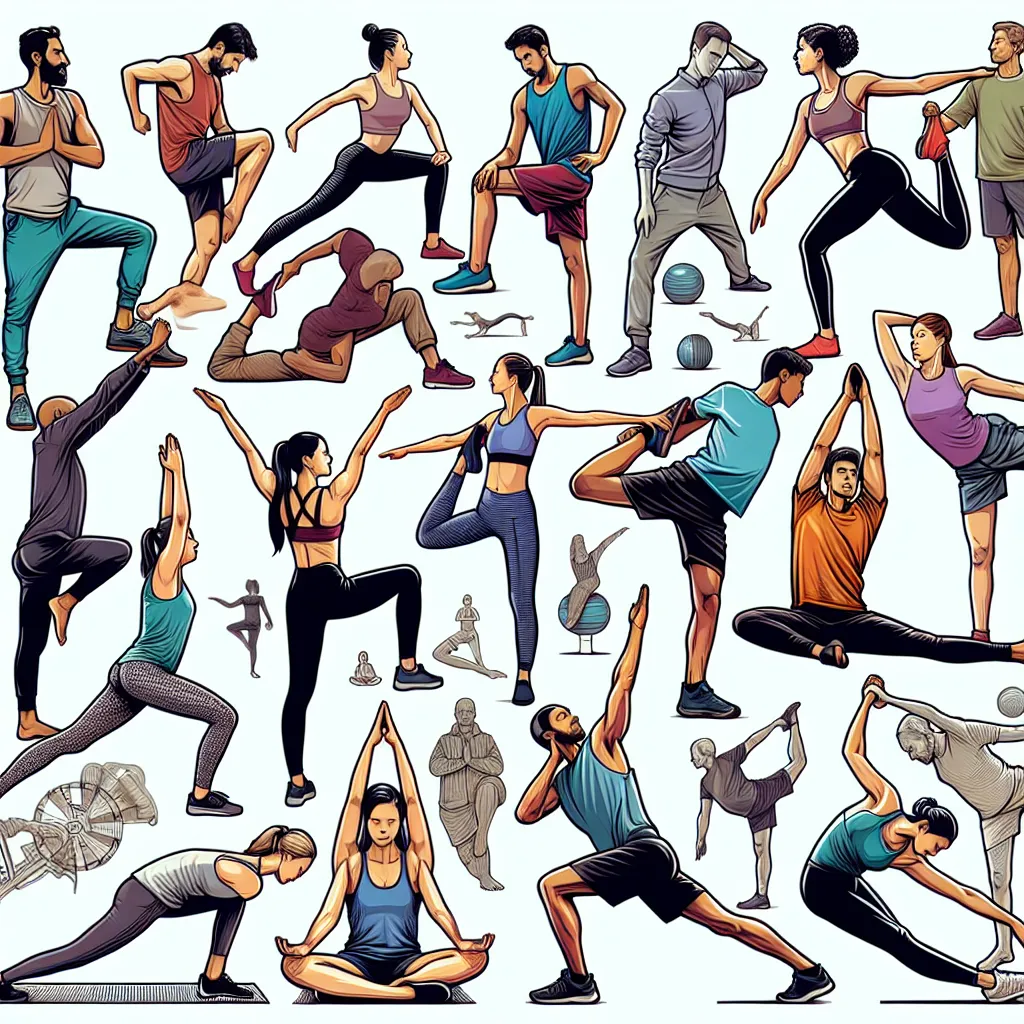Flexibility training is a crucial aspect of physical fitness that often appears in IELTS reading and listening tests. As an IELTS teacher, I’m here to help you understand this concept thoroughly and use it effectively in your exam. Let’s dive into the world of flexibility training vocabulary!
Definition and Context
Flexibility training (noun) /ˌfleksəˈbɪləti ˈtreɪnɪŋ/
Definition: A type of physical exercise designed to increase the range of motion in joints and muscles, improving overall flexibility and reducing the risk of injury.

Usage in Context
-
“Flexibility training is an essential component of any well-rounded fitness program.”
Analysis: This sentence introduces the concept as a fundamental part of fitness, highlighting its importance. -
“Athletes often incorporate flexibility training into their daily routines to enhance performance and prevent injuries.”
Analysis: Here, we see the practical application of flexibility training in athletic contexts. -
“The yoga instructor emphasized the importance of flexibility training for maintaining a healthy spine and improving posture.”
Analysis: This example shows how flexibility training is linked to specific health benefits. -
“Regular flexibility training can help alleviate muscle tension and reduce the risk of chronic back pain.”
Analysis: This sentence highlights the preventative health benefits of flexibility training. -
“As we age, flexibility training becomes increasingly important to maintain mobility and independence.”
Analysis: This example contextualizes flexibility training within the aging process, emphasizing its long-term significance.
Frequency in IELTS
The term “flexibility training” and related concepts frequently appear in IELTS Reading and Listening tests, particularly in passages about health, fitness, and sports. It’s less common in Speaking and Writing tasks but could be relevant in Task 2 essays discussing health or lifestyle topics.
Vocabulary Analysis
Word Structure
- Flexibility (noun): from ‘flexible’ + ‘-ity’ (suffix indicating a state or condition)
- Training (noun): from ‘train’ (verb) + ‘-ing’ (suffix forming nouns from verbs)
Synonyms and Antonyms
Synonyms:
-
Stretching exercises /ˈstreʧɪŋ ˈeksəsaɪzɪz/ (noun): Physical activities that involve extending or lengthening muscles to improve flexibility.
-
Mobility work /məʊˈbɪləti wɜːk/ (noun): Exercises focused on improving joint range of motion and overall body movement.
-
Suppleness training /ˈsʌpəlnəs ˈtreɪnɪŋ/ (noun): Exercises aimed at increasing the body’s ability to bend and stretch easily.
Antonyms:
-
Rigidity exercises /rɪˈʤɪdəti ˈeksəsaɪzɪz/ (noun): Hypothetical exercises that would increase stiffness (not a real training concept).
-
Inflexibility training /ɪnˌfleksəˈbɪləti ˈtreɪnɪŋ/ (noun): A contradictory term, as training typically aims to improve, not reduce, flexibility.
Memorization Techniques
Mind Map
Create a mind map with “Flexibility Training” at the center, branching out to:
- Types (e.g., static stretching, dynamic stretching, PNF stretching)
- Benefits (e.g., injury prevention, improved performance, better posture)
- Related activities (e.g., yoga, Pilates, dance)
- Target areas (e.g., hamstrings, lower back, shoulders)
Imagery Technique
Imagine a rubber band being gently stretched. As it stretches, think of the words “flexibility training” written on it. This visual can help you remember that flexibility training is about safely increasing your body’s ability to stretch and move.
Practice Exercises
-
Fill in the blanks:
“Regular can help improve your range of motion and reduce the risk of muscle strains.”
(Answer: flexibility training) -
IELTS Writing Task 2 Practice:
Topic: Some people believe that flexibility training is as important as cardiovascular exercise and strength training. Do you agree or disagree?In your response, be sure to use the term “flexibility training” and related vocabulary appropriately.
-
IELTS Speaking Practice:
Describe a time when you engaged in flexibility training. What did you do, and how did it make you feel?Use this opportunity to practice using terms like “stretching exercises,” “range of motion,” and “muscle flexibility.”
Conclusion
Understanding and correctly using the term “flexibility training” can significantly enhance your performance in the IELTS exam, particularly in Reading and Listening tasks. Remember to practice using this term in context, and don’t hesitate to incorporate it into your Speaking and Writing responses when relevant.
By mastering this vocabulary, you’re not only preparing for IELTS but also gaining valuable knowledge about physical fitness. Keep practicing, and you’ll find yourself flexibly using this term in no time!
Do you have any questions about how to use “flexibility training” in your IELTS prep? Feel free to ask in the comments below!